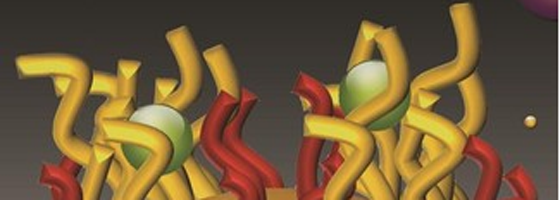Nanoparticles could greatly cut cost of toxic metal monitoring

A quicker, cheaper way to test for water-borne toxic metals has been developed through collaborative research, according to a University of Michigan news release.
Scientists at the University of Michigan, Northwestern University and the Swiss Federal Institute of Technology have made what some call “nano-velcro,” describing a thin glass plate covered with particle strands. The hair-like strands react to positively charged metal ions in water by closing together, trapping pollutants.
By varying particle length, specific pollutants can be targeted. The testing method is reliable for detecting methyl mercury, a highly common and toxic metal pollutant. Young children and pregnant women are especially sensitive to the element, which reaches its highest levels in large fish like tuna and swordfish. Water is tested periodically for it, but fish which have traveled through polluted water into a clean area could still contain it. By dissolving fish meat in fluid, the hairy strips can be used to detect mercury in fish products before they go to market.
Current monitoring techniques involve sending samples to a laboratory, waiting for results and using expensive testing equipment. The new testing approach, featured in the journal Nature Materials, cuts the cost to less than $10 per strip and a few hundred dollars for the paired measurement device. It is capable of detecting 600 ions per cubic centimeter.
Image: Nano-velcro rendering (Credit: Northwestern University)





0 comments